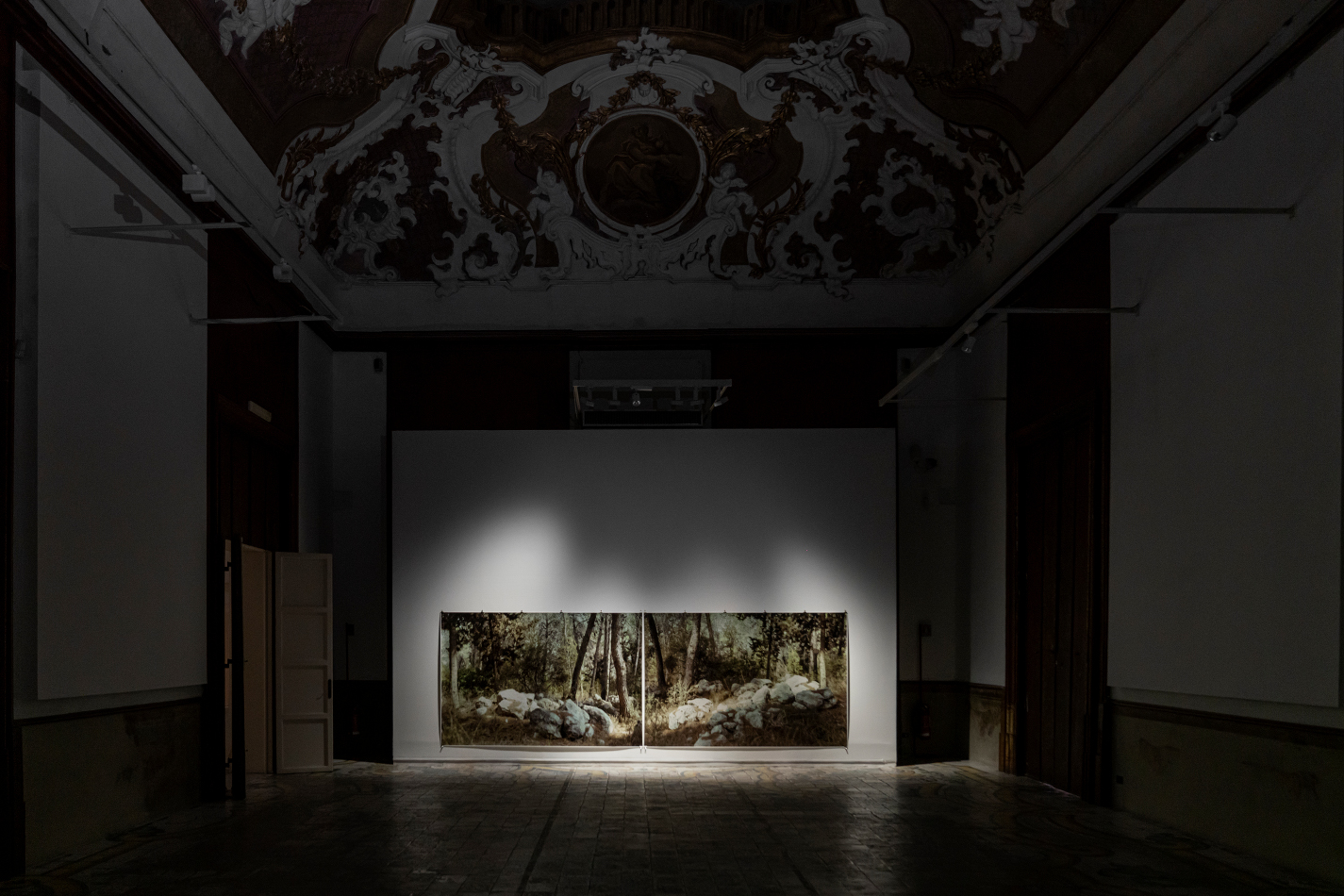I can hear the artist Rafael Y. Herman fiddling with his stove all the way in Paris. “I’m making coffee,” he explains. We start talking cafes, and suddenly I’m transported back to a place on the lip of the river Seine where I sat out a particularly bruising, Parisian winter. The coffee shop roasted its own beans. You’d smell the shop before you’d see it. Does he know it?
“Know it? I live above it. They’re killing me with that smell.”
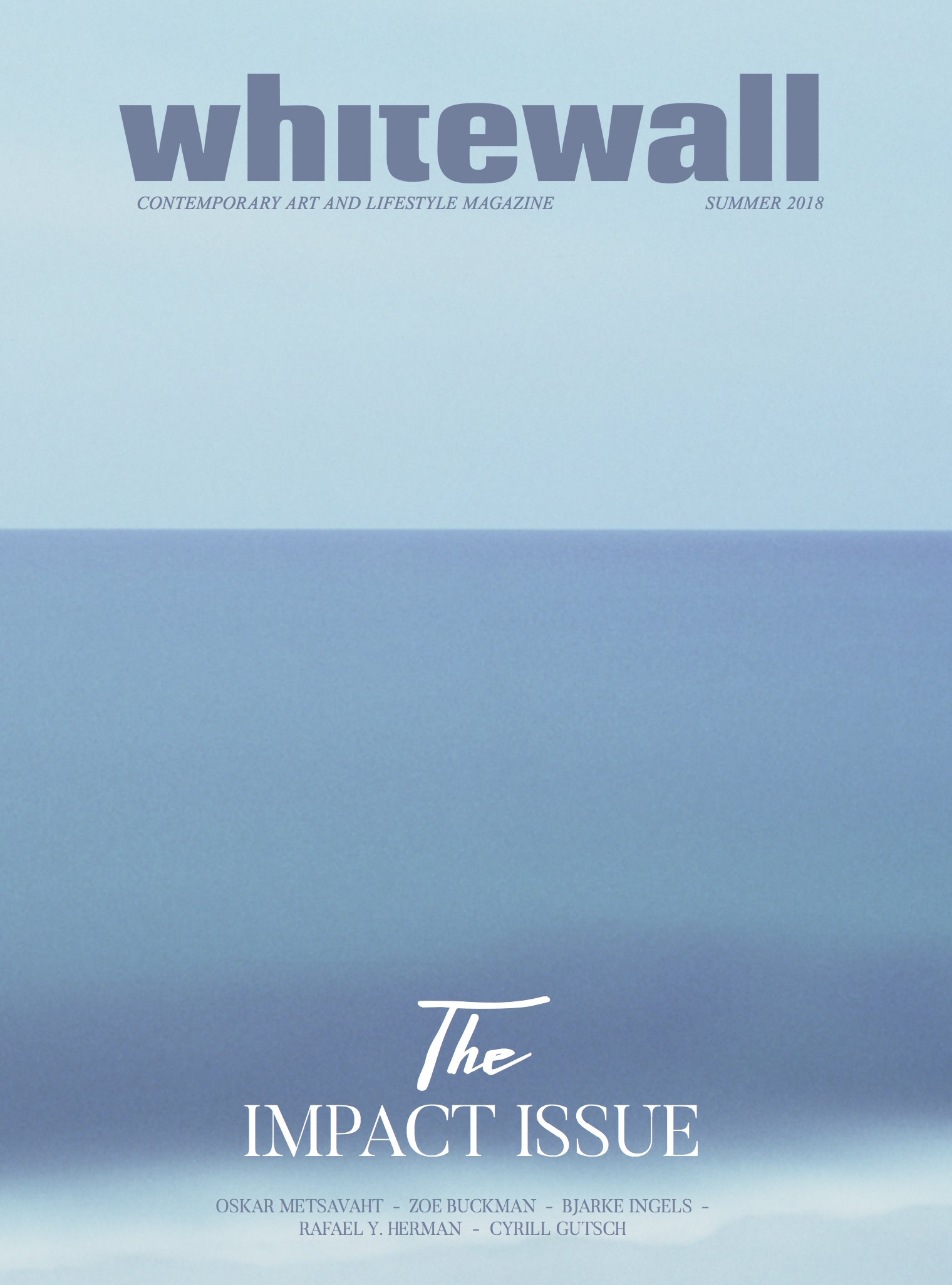
Whitewall Summer cover for the Impact Issue, featuring “Mare Xll” (detail) by Rafael Y. Herman.
Herman has a knack for making strange again the very locations you thought you knew well. Before his apartment with the coffee aroma, he was living in a forest in the middle of Montmartre (his description). He’s in the Marais now, which makes studio visits easier. “I like being in the center. I can see 180 degrees of the city from my window. The Pantheon. Île de la Cité. The Eiffel Tower. The Seine below.”
It’s hard to describe one’s whereabouts to someone who is physically absent. There are more ways to portray a place than there are actual places. Herman understands this spatial component to language—how the right words can conjure a different place altogether. That’s why the titles of his artworks are cryptic and in Latin. He doesn’t want us to know where we are.
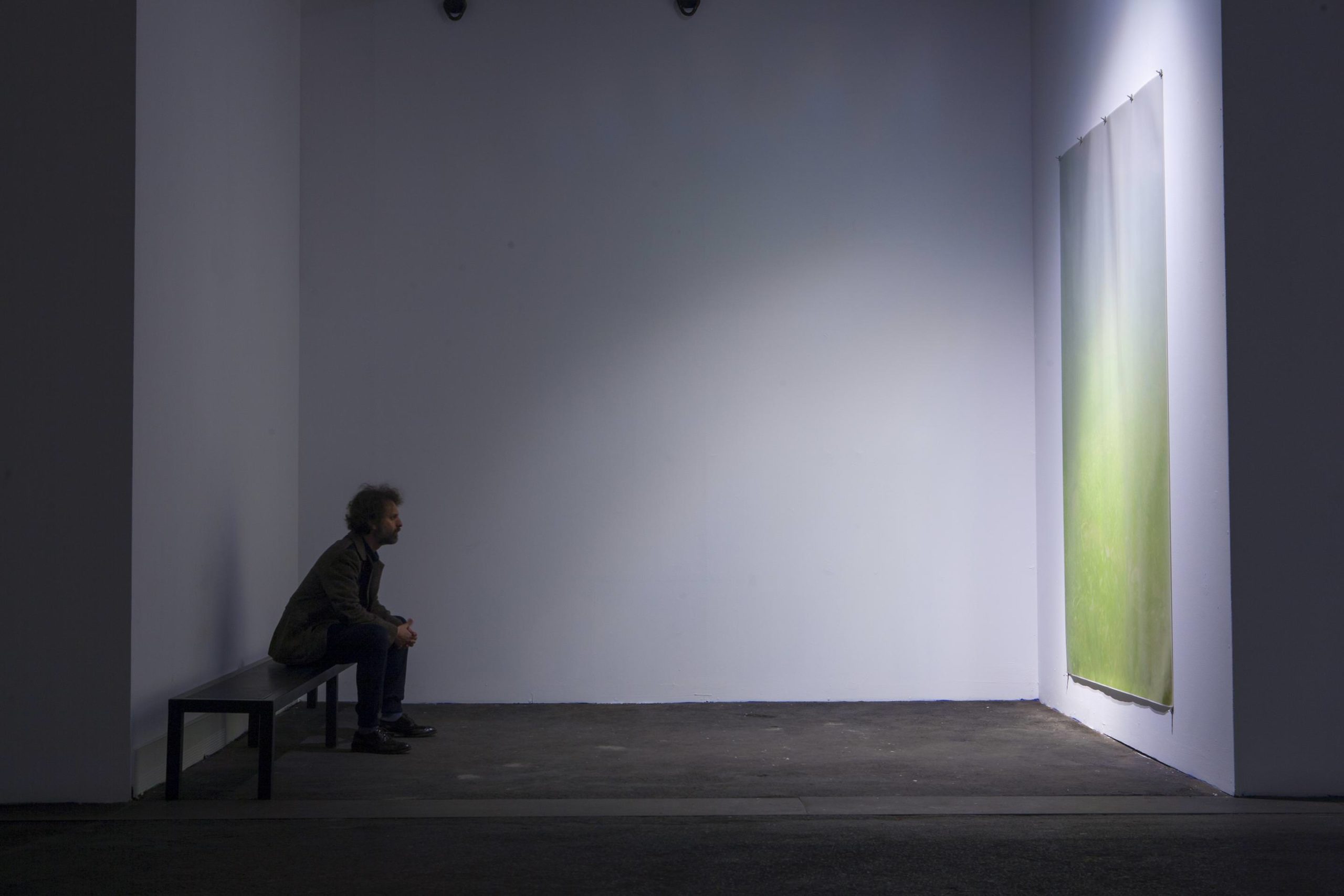
Courtesy of Herman studio
It all began with night drives into the Negev Desert. Herman would borrow his father’s truck, drive until he was lost and, after cutting the engine, sit and think about light in the dark. His contemporary art emerges out of these reflections.
It’s hard to wrap your head around light—how it conditions our sense of the real. When you focus on light (Herman focuses on light by eliminating it), your sense of what belongs naturally to the world is upset. Colors in the dark, for instance. Do they ever run off? Does green grass stay green from noon till night? Do familiar sites cocoon, morph, reveal a different side of themselves? These questions have scientific answers (it has to do with reflective properties, wavelengths, and how wavelengths are scattered). Light and its relationship to the real is also a philosophical maze. It warps your sense of what’s intrinsic or permanent to the world—hence, what we take to be real.
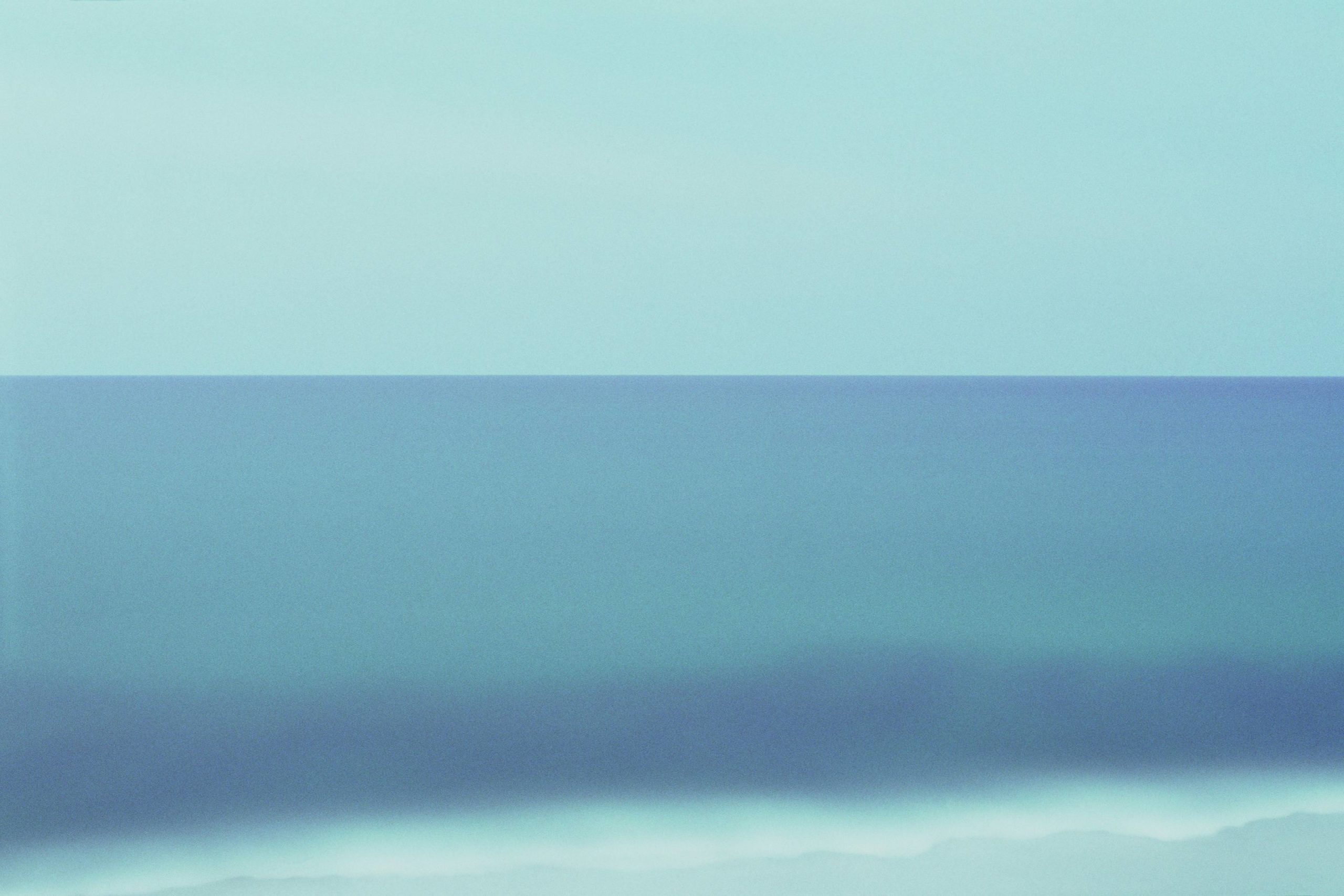
Rafael Y. Herman
Mare XII
2012
71 X 106 inches (180 X 270 cm)
Courtesy of the artist
Herman’s technical process is stubbornly all his own, scientific as much as it’s cryptic. His medium is light. “I never see what I am doing,” he tells me. “I step into the places when it’s already dark, and leave the locations when it’s still dark. They exist for me only in my work.” Lenses and tripods are involved. And though the finished works appear photographic in aspect, to call them photographs is to strip them of their ambiguity. Herman’s art transports us to a nonplace: an alternative reality that falls outside the range of everyday sight.
There’s a method to keeping his technical process hush-hush. If Herman’s goal is to decolonize our vision (to make us unsure of what we see), the less we can presume to know, the more we are open to experience. “Leave all the knowledge behind, all the experience behind,” instructs Herman.
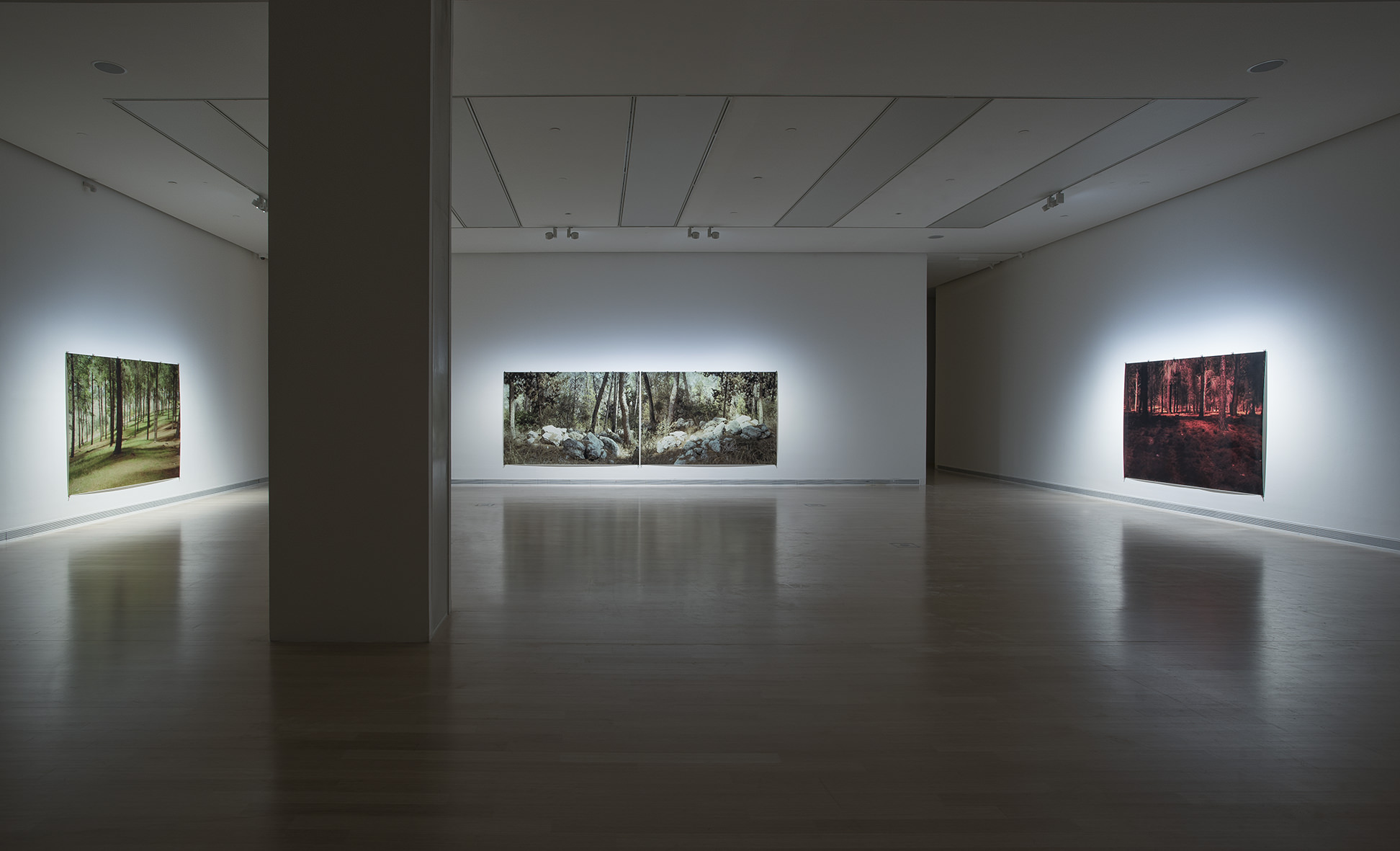
“Imaginarium Silvarum Artificialis Revera Saltus III”
Installation view of Rafael Y Herman
Photo by Jozsef Rosta
At first, you think you are looking at nature. “Like something you’d see on a vacation with the family,” Herman jokes. “In that way, I confuse the public. I make the public think they know what they see.” Trees, fields, forests, ocean. Everything is deceptively identifiable.
“When you see the works at a distance, you see layers of colors. One layer over another, which creates a horizon,” says Herman. There’s an indescribable coating to the works: a diaphanous film of atmosphere that reels you right in. “I’m working on that little, little border between banal and impossible,” he adds. “You need to discover what’s in the works. You have to make an effort to find. I show things that cannot exist in the day. That’s what is confusing.” In a more abstracted work like Terrarum Verticalm, you can make out just the shimmer of a footpath. In Somnum Rubrum, a field of grass with poppies running through it. In Montem 12, a rushing river. Looking at Perspicuum, Herman points out the flowers. “Look, they’re closed.” (Some petals do this in the dark.) I’m registering something that’s physically impossible to see.
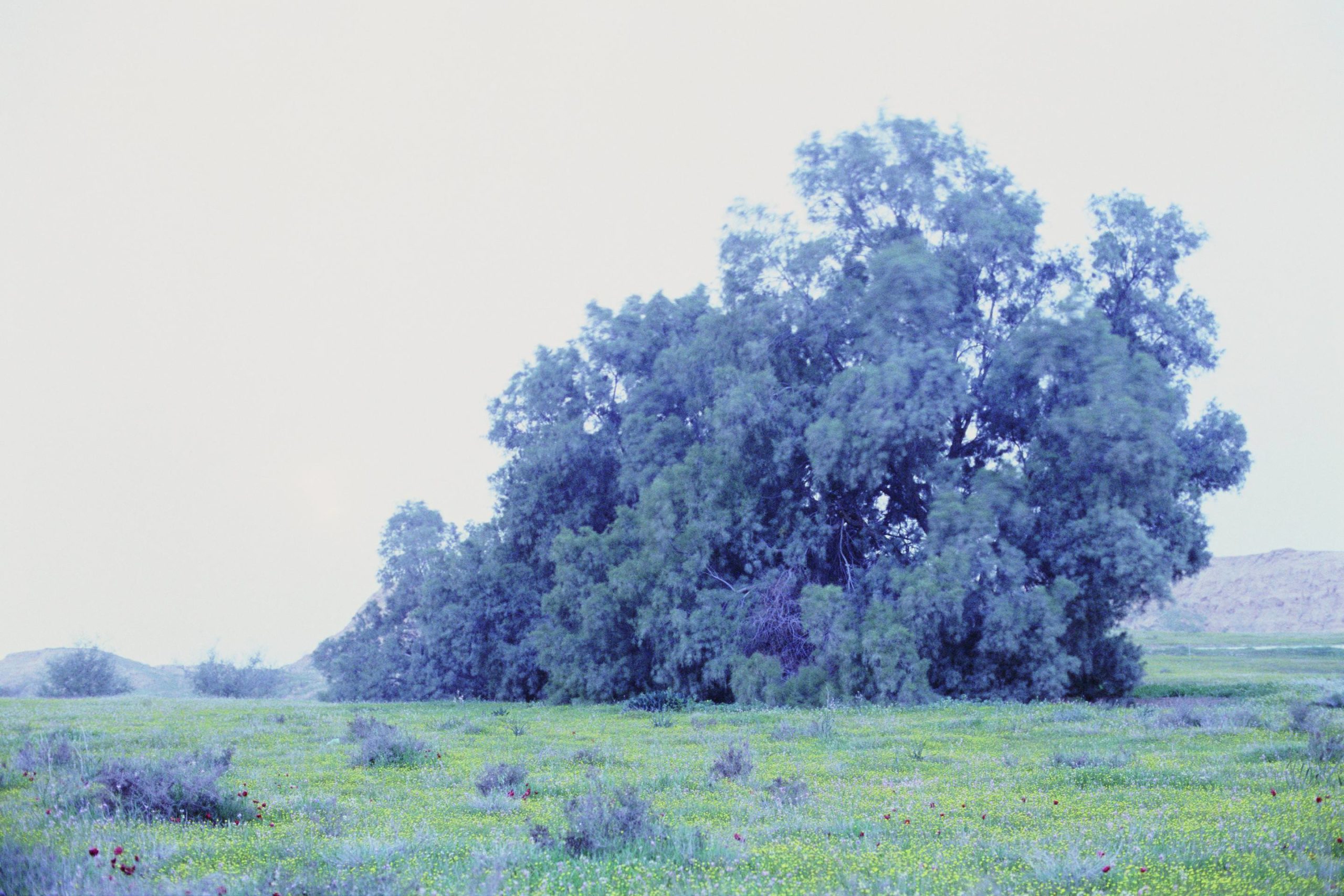
Rafael Y. Herman
Felix Taeda II
2018
71 X 106 inches (180 X 270 cm)
Courtesy of the artist
We discuss his two most recent solo exhibitions: “The Night Illuminates The Night” at the Museo d’Arte Contemporanea di Roma, and “Rafael Y. Herman” at the Ludwig Múzeum in Budapest. The Rome installation was an about-face. You entered a massive hangar that “looked completely empty,” as if no artworks had been installed. “The more you walked,” Herman explains, “the more you discovered that you needed to turn. The art was on your shoulder the whole time. Right behind you.” When you got to the end of the hangar, you’d turn back to face everything you weren’t in the position to see in the beginning. With Herman, everything is understood in reverse.
His eponymous exhibition at the Ludwig Múzeum stretched out over an entire museum floor. You began in a semidark room and moved either counterclockwise or clockwise. If you started to your left, you’d meet a blank wall every time you entered a new room. The works waited for you in your peripheral vision. Each of the rooms was distinctively lit, the temperature of the lighting subtly adjusted. You’d step in and out of pools of darkness. One room was bright enough for sunglasses.
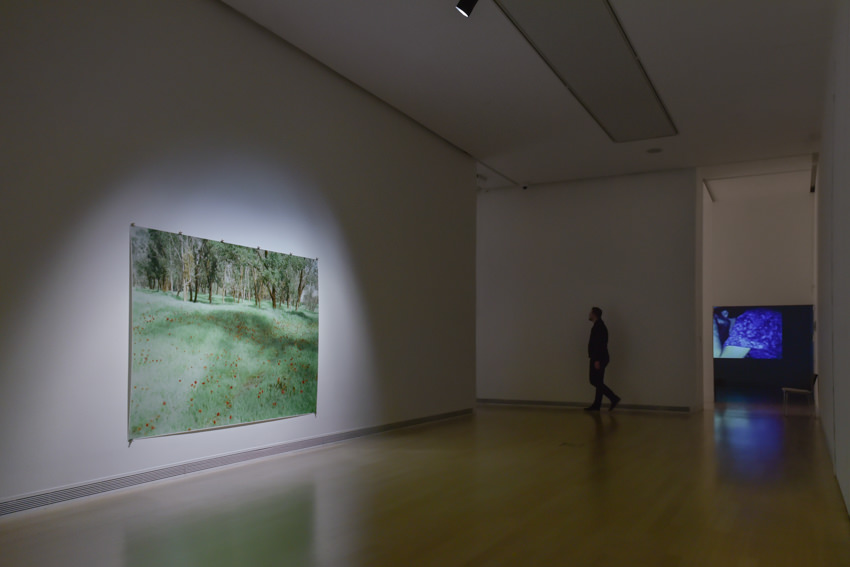
Ludwig Museum exhibition
Rafael Y. Herman
Budapest
2018
Somnum Rubrum
71 X 96 inch (180 X 244 cm)
Photo by Jozsef Rosta
Courtesy of the artist
Herman’s works are quite large in format. Some are frameless and hang loose on darkroom clips. “They’re like leaves that can disappear with a blow of wind,” he tells me. Other works are framed and perched upright on the floor, like sculptures or light boxes. You could almost step inside of them.
The catalogue for Rafael Y. Herman, too, is understood in reverse. He sends me a copy in the mail. It’s a secret flipbook. When I start from the back and let the pages flip from under my thumb, the catalogue appears blank. Just the names of the artworks pop up in the corner. If you want to see actual reproductions of the art, you have to take your time with the catalogue, opening up its double foldout pages.
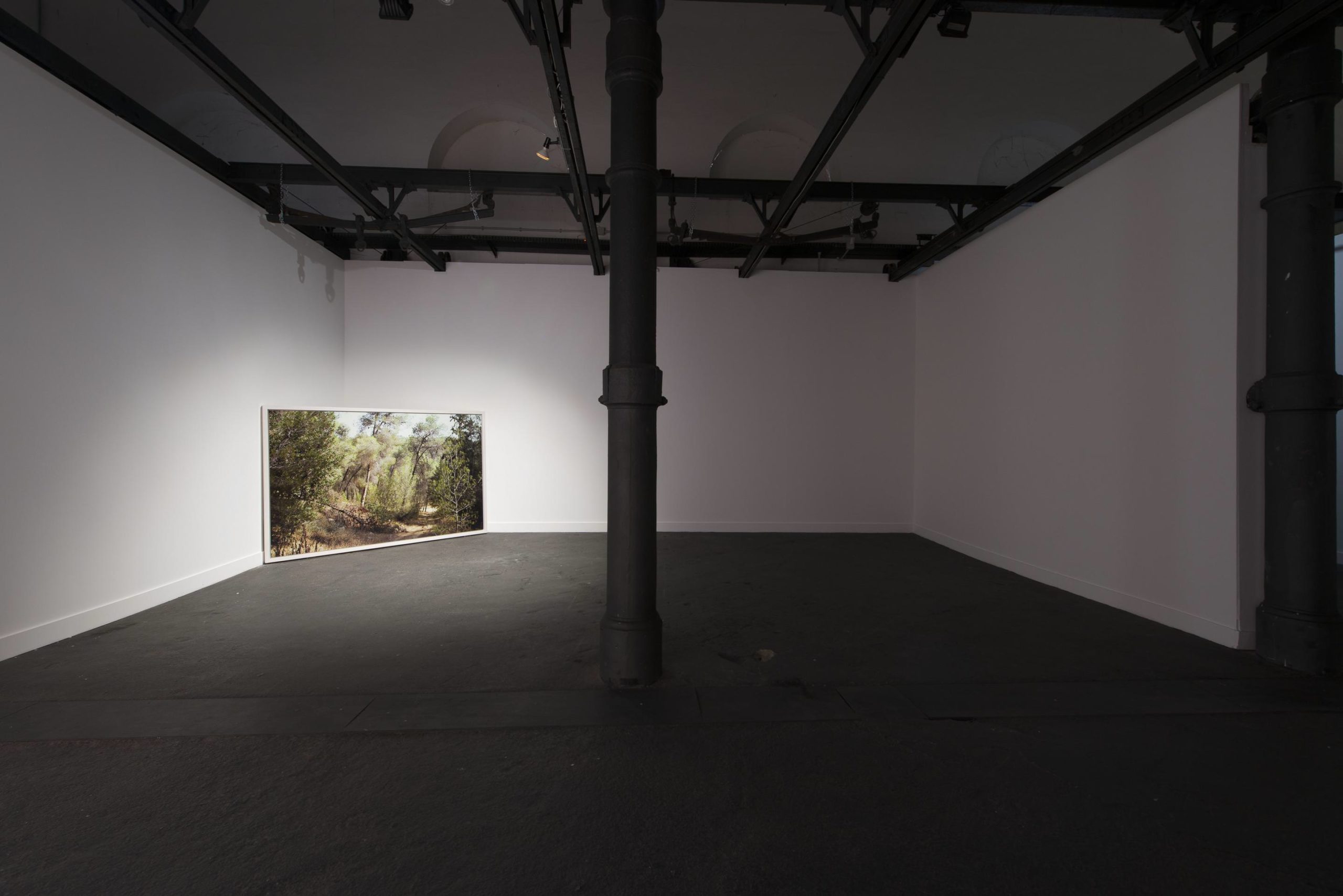
MACRO Museum exhibition “The Night Illuminates the Night”
Rome
2017
Bosco III
71 X 106 inches (180 X 270 cm)
Photo by Giorgio Benni
Courtesy of the artist
During an artist walkthrough, Herman stopped a group in front of Mare 12. “As children, we are told that the sea reflects the color of the sky. That’s why it is blue. So what is the color of the water when the sky is black?” He turned to the crowd. There was an awkward moment of silence. No one was sure of themselves any longer. Everyone began to laugh. Blue could be the new black.
If you stay with the work past its dramatic reversal (the moment where you realize you are looking at something you can’t physically see), a psychological weight lifts (perhaps this is why Herman had benches installed throughout his floor of the Ludwig Múzeum). You register the relief all over your body. You can let go of being right, recover the pleasures of uncertainty.
Last time Herman passed through the Ludwig Múzeum exhibition, he saw a couple make amends. “That’s amazing. To see people sitting there and making out in the middle of the room.” His artworks remind us that there are many ways to see the same thing. It’s about holding space for alternative versions.
Herman’s nonreality exists only in the works themselves. The “real” versions of the forests, fields, and waterways are still out there: impenetrable to our eyes, uninterrupted, continuing regardless of whether or not we’ve paid them any attention. By getting us to engage with what we cannot see, Herman familiarizes us with our blind spots—something we need to be doing more of in a time of bigoted denial (and climate crisis). If we can’t imagine an alternative future, oceans and forests will go the way of Latin.


